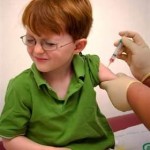So it’s cold and flu season and your child is sick. How do you know what he/she has and then what do you do about it?
The term “flu” is commonly thrown around to describe anything from a runny nose to viral gastroenteritis, or the stomach flu. In reality, the flu is caused by a very specific virus called influenza. An infection with influenza typically causes sudden onset of high fever, body aches, chills and sometimes dry cough. It is generally more severe than the common cold, which can be caused by any one of thousands of viruses. Sometimes it can be quite difficult to tell the difference and some viruses that occur in spring and summer have similar symptoms to the flu. Some red flags for the flu are as follows:
- High fever
- Fatigue
- Body aches
- Cough
A runny nose and cough with little or no fever (>100.4) is more likely to be a common cold. The flu can be complicated by pneumonia or other bacterial infections that can be very serious and result in hospitalization. Usually the common cold does not have serious complications.
Another respiratory virus commonly seen in winter is RSV, respiratory syncytial virus. This tends to affect younger babies more than older kids and causes a lot of secretions. Sometimes the secretions clog the airway and cause low oxygen, pneumonia and wheezing. In older kids, who typically are carriers of RSV, the symptoms are that of a common cold.
Once a diagnosis is made, the next step is treatment. When the flu is diagnosed early enough, medication called Tamiflu can be prescribed. Treatment can help prevent spread and complications. There is no treatment for a common cold and regular antibiotics are never needed for viral infections. Symptomatic treatment, rest and fluids are the mainstay of care.
Prevention is the key to limiting the spread of colds and flu. Wash your hands and avoid touching your face. Flu shots are vaccines that help your body build immune cells that fight the flu if you are exposed.
If you are concerned about any of your child’s symptoms, call you doctor.



